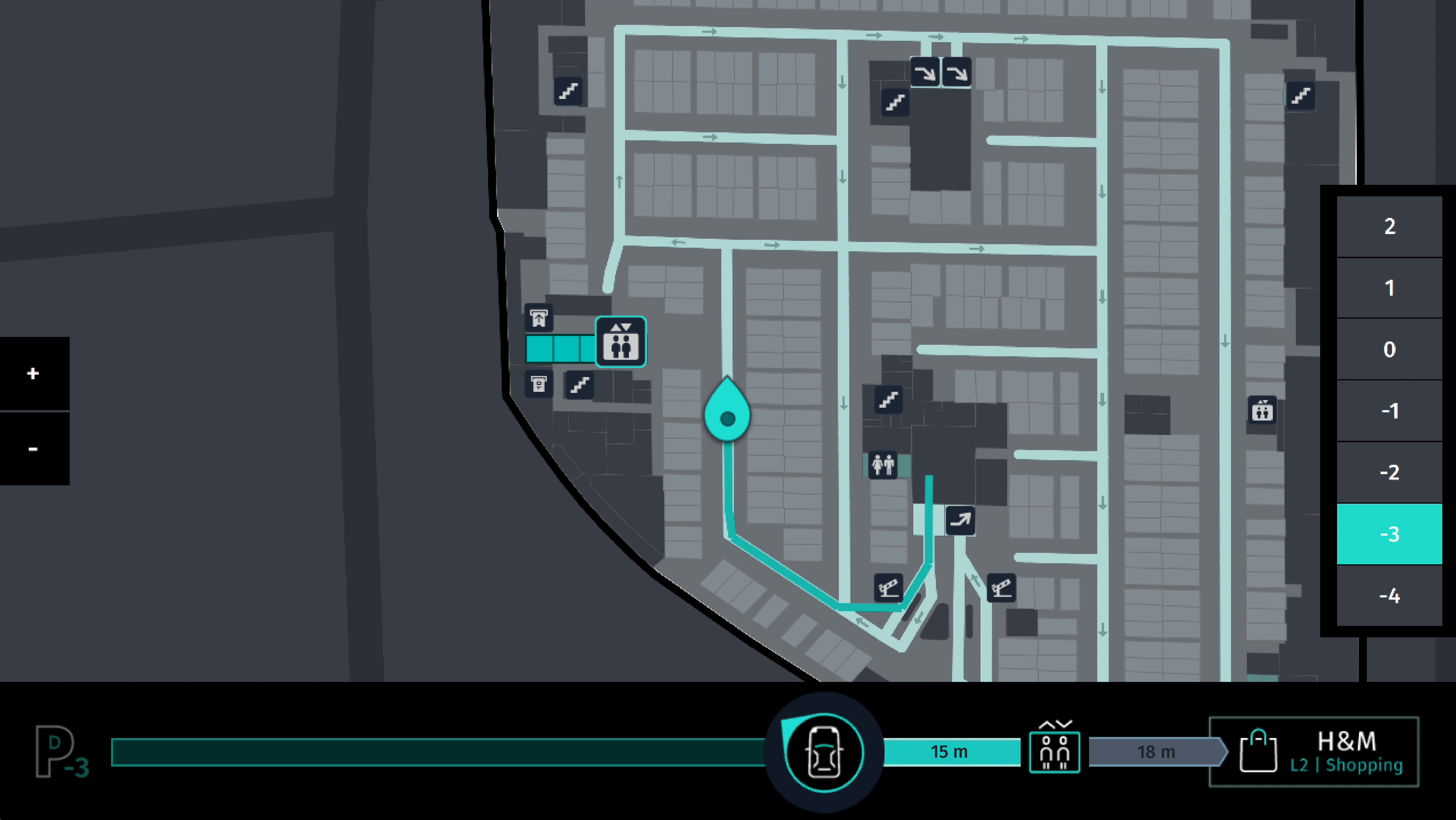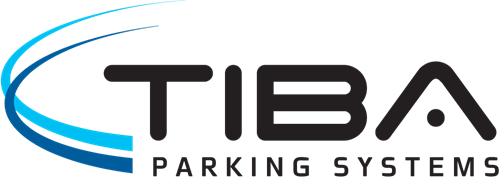
Five fundamental design principles to make indoor parking a desirable, usable and useful experience. We finally crack the code on indoor navigation with our own design-led study, and the results are surprising.
Indoor parking can be stressful. Fortunately, our 3D maps of over 100,000 buildings in 86 different countries (and growing!) can help us navigate those narrow lanes and maze-like structures. But location data isn’t the only tool for understanding the indoor concept. By exploring the experiential factors through a series of design-led investigations, we reframed some of our core assumptions about what makes a parking experience safe and smooth for everyone. The results were surprising.
First, you could say we needed a macro understanding for a micro problem. The layout and geometry of indoor venues can be complex and differ dramatically from city to country. We know car sensors and accurate maps offer the technical solutions. Dead-reckoning technology in particular offers a promising approach as it doesn’t require infrastructural changes.
But we needed to identify general "pain points," or driver frustrations, and how they change with design. We needed a better understanding of the experiential issues of indoor navigation. Our pilot study included five participants visiting two indoor parking venues around Berlin. Initially, we assumed wayfinding would be a central concern. We also assumed that increased capacity would increase the need for assistance.
We were wrong.
By designing a prototyping process that helped us test on the fly, we were able to see what was desired, helpful and problematic apart from the sometimes sketchy GPS data that complicates life just about anywhere. Ultimately, pain points and corresponding expectations shifted in ways that technological research might have missed.
Here are five design principles that we learned from prototyping indoor parking experiences:
- Break the pipeline: No one parks just to park. You buy something or meet a friend or see a movie. Lots can happen along the way based on driver experience, points of interest, and venue occupancy as well. Our study found that participants made ad hoc decisions based on lack of information that could impact those choices, too. So, breaking the pipeline mentality is key. Parking decisions are a mix of facts and personal preferences.
- Design for opportunities: Drivers want recommendations, even if they’re ignored. We learned to design for any opportunity along the way, as the journey is sometimes more important than the destination when it comes to navigating indoors. Moreover, we were surprised to learn that drivers prefer to follow something over, well, nothing. Constant movement is a good thing even though they will ultimately make their own decisions.
- Data robustness: The system needs to handle all types of data generated from our maps. This includes venues where data capacity is low and features like routing might be impossible or introduce all sorts of errors. Additionally, garage parking spot sensors aren’t always accurate. Without a robust network, inaccurate data is a wretch we most certainly can avoid. No one expects to find a motorcycle in an "empty" parking space.
- Look past sight lines: Creating a mental model is more important than showing the actual route. You can imagine our surprise after hearing that one. Drivers have plenty of navigational information right outside the window. Our study participants wanted something more. They wanted to make informed decisions about potential exits over predetermined destinations, for example. We need to visualize what those decisions might be.
- Keep occupancy in mind: Some call this the paradox of choice. We learned that the busier a venue, the easier to park. The less occupied, the more complicated. Surprisingly, participants needed more navigational tools in a less occupied venue, while drivers stuck to the design structure and took the first available space in a crowded venue. Not great news for all you backseat drivers out there.
In the end, you could say our study reframed our navigation assumptions by articulating two central design approaches: a) let users think ahead; and b) make the parking spot sell itself.
It’s safe to say we don’t always end up where we started, even in a parking garage. The results from our design-led exploration helped us define the experiential factors for designing a useful, usable and desirable product. It also helped us identify critical sensitivities for designing an indoor navigation system with early stage product-based prototyping.
Check out the full report of the whole journey at the MobileHCI 2018, the premier academic conference on mobile interaction in September.
About HERE Technologies 
HERE, the Open Location Platform company, enables people, businesses and cities to harness the power of location. By making sense of the world through the lens of location we empower our customers to achieve better outcomes – from helping a city manage its infrastructure or a business optimize its assets to guiding drivers to their destination safely. To learn more about HERE, including our new generation of cloud-based location platform services, visit http://360.here.com and www.here.com.



